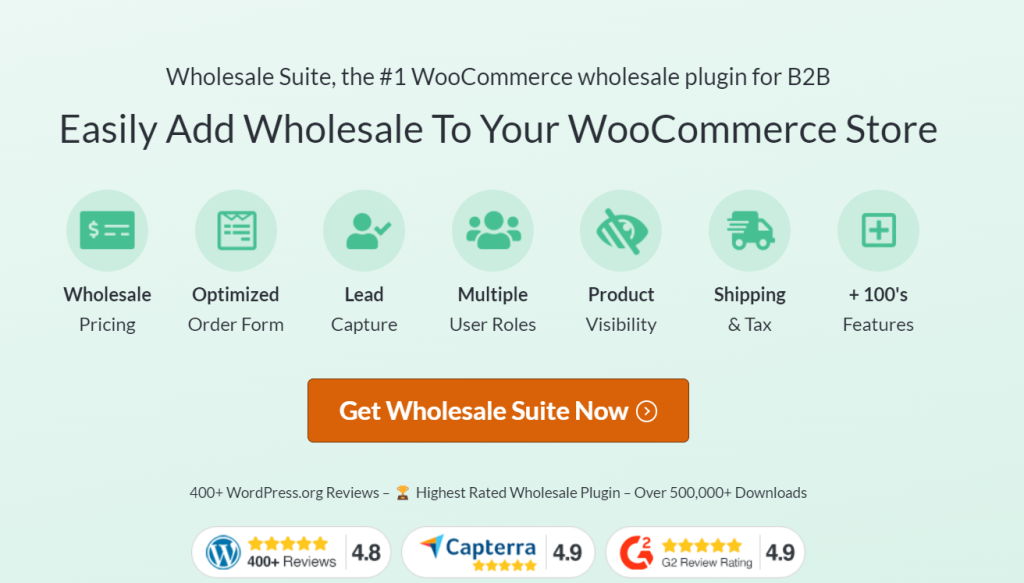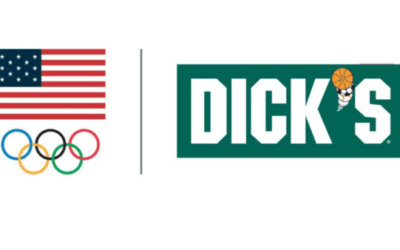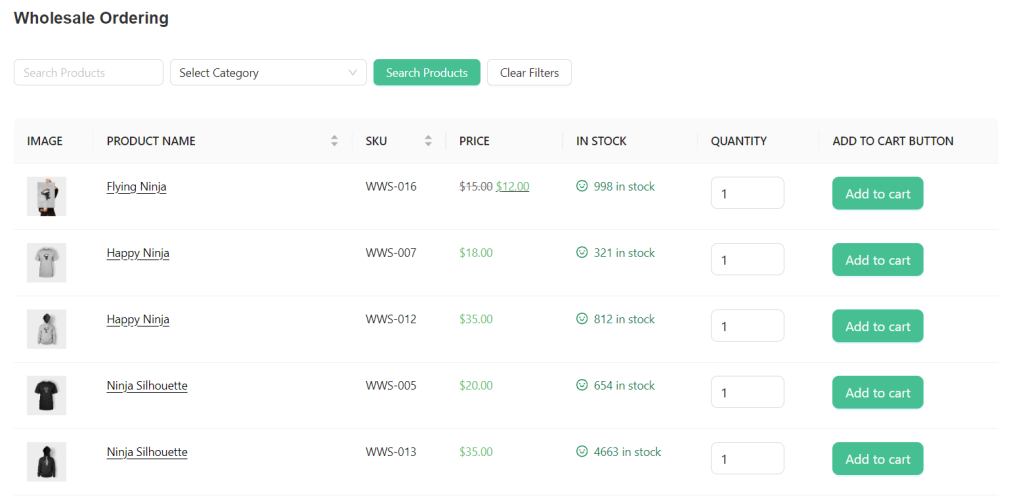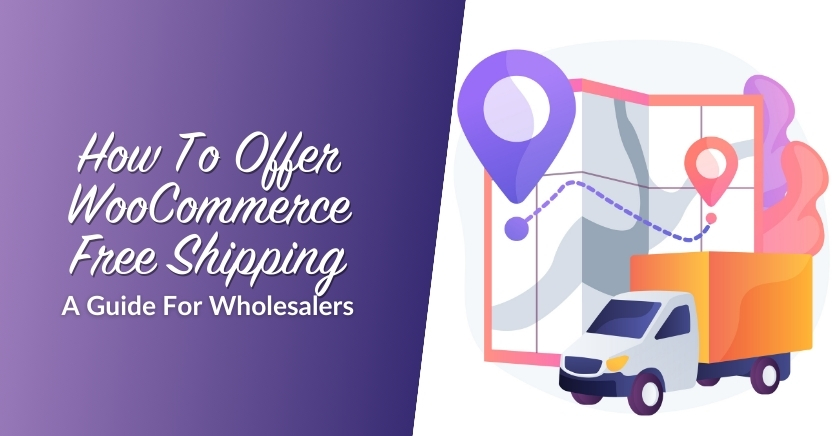How To Stay Competitive In The Wholesale Distribution Industry


Evolving customer expectations, disruptive technologies, and shifting market dynamics pose an array of challenges to the wholesale distribution industry. In today’s landscape, B2B customers enjoy countless options at their fingertips, challenging business owners to differentiate themselves from the competition. To stay ahead of the curve and stand out, wholesalers must continue to adapt and innovate.
In this article, we delve into the intricacies of the wholesale distribution industry and review the opportunities it presents for aspiring entrepreneurs. We’ll also uncover effective strategies to help you thrive in this competitive environment, empowering you to build lasting success. So, let’s get right into it!
Understanding The Wholesale Distribution Industry
The wholesale distribution industry plays a key role in the supply chain, serving as an intermediary between manufacturers and retailers. Wholesale distributors purchase goods in bulk from manufacturers and distribute them to retailers, who in turn make them available to end consumers. In essence, wholesalers bridge the gap between production and consumption, ensuring the seamless flow of goods and their availability for businesses.
Indeed, this industry is alive and thriving. In the US alone, the wholesale distribution industry boasts over $9 trillion in annual sales. Wholesalers are invaluable in the market landscape, and venturing into this industry offers several benefits for aspiring entrepreneurs:
- Expand market reach and grow: The wholesale distribution industry provides entrepreneurs with the opportunity to serve broader markets. By serving as intermediaries between manufacturers and retailers, wholesalers can tap into different market segments and regions, opening up new avenues for growth.
- Opportunity to diversify product portfolio: The wholesale distribution industry also allows aspiring business owners to curate a diverse portfolio of products to meet the needs of different market segments. From niche items to mainstream consumer goods, wholesalers have the choice to tailor their offerings and capitalize on consumer demand.
- Boost profit margins: By leveraging economies of scale, wholesalers can also further increase profit margins. They procure goods at lower costs from manufacturers and sell them at a markup to retailers, giving them substantial profit margins they can use to reinvest in their business and explore new opportunities.
5 Key Strategies To Stay Competitive In The Wholesale Distribution Industry
The wholesale distribution industry is rapidly evolving, requiring wholesalers to continuously reassess their approaches and seek innovative ways to remain competitive. So, in this section, we’ll explore key strategies you can leverage to thrive in this dynamic market:
1. Improve order fulfillment processes
Order fulfillment is a key competitive edge in the wholesale distribution industry. As a wholesaler, you’ll want to ensure your valued B2B clients have access to the products they need to fulfill their customer’s demands. Consequently, in a market where reliability is crucial, streamlined order fulfillment processes can position you as a preferred supplier.
This begins the moment your customers engage with your website and place an order. Firstly, you’ll have to set up ordering systems that cater to the needs of your wholesale customers. They don’t have time to sift through a lengthy product catalog, so implement processes that facilitate effortless bulk ordering.
WooCommerce wholesalers can leverage plugins like Wholesale Order Form to make this possible. With Wholesale Order Form, you can easily create one-paged, intuitive ordering forms that make purchasing easier for wholesale clients.
Evaluating your order fulfillment process
In addition to implementing user-friendly ordering systems, it’s also important to analyze your current workflow and identify bottlenecks to optimize order fulfillment.
Here are some key areas to consider:
- Shipping and Logistics: Evaluate your shipping and logistics processes to identify any opportunities to make your ordering process more efficient. For example, you can adopt pick-pack-ship best practices like batch picking similar orders, utilizing barcode technology for accuracy, and optimizing packaging to minimize costs.
- Warehouse layout: Take a closer look at how you can optimize your warehouse layout for optimal space utilization and minimize travel time for picking, packing, and shipping orders. For instance, organizing products based on demand and frequency of movement can reduce picking and packing times. You can also consider implementing zoning strategies to improve accessibility and maximize storage space.
- Client communication: Your communication channels with B2B buyers are also as important. Ensure that you provide timely updates on order statuses and shipping schedules, and communicate any potential delays. This showcases your reliability and fosters trust and customer loyalty in the long run.
2. Optimize inventory management
Optimizing your inventory management is directly related to creating a faster and more streamlined ordering process. While the latter encompasses the entirety of the process, this strategy is focused on ensuring your inventory levels are aligned with customer demand. This is key to success in the wholesale distribution industry, where maintaining adequate stock levels means meeting the needs of your customers.
Efficient inventory management starts with a comprehensive understanding of your product portfolio and customer demand patterns. So, take advantage of the data you already have to forecast demand and adapt your inventory levels. This may include historical purchase data, market analysis, or customer feedback.
Here are some best practices you can implement:
- Invest in inventory tracking systems: Modern inventory tracking systems have helpful features like demand forecasting, real-time stock monitoring, and replenishment notifications. You can also utilize these technologies to identify trends, track inventory movements, and make data-driven decisions for your wholesale business.
- Categorize your inventory: It’s also helpful to assess your inventory items and classify them based on demand, profitability, or storage requirements. This will help you identify which items to prioritize in your inventory management efforts.
- Set reorder points: Reorder points indicate the minimum quantity for each inventory item at which a new order should be placed to avoid the risk of stockouts. By setting reorder points, you can ensure timely replenishment of your inventory.
- Implement safety stock levels: Safety stock, on the other hand, refers to additional quantities of items you keep in your inventory to mitigate stockouts during unexpected spikes in demand. This also serves as your buffer against potential delays or disruptions in the supply chain.
3. Offer personalized pricing
In the wholesale distribution industry where B2B customers have countless options to choose from, tailored pricing serves as a key competitive edge.
This strategy entails crafting pricing strategies for specific customer segments, taking into account factors like purchase history, commitment level, or order volume.

E-commerce wholesalers can rely on tools like Wholesale Prices Premium to seamlessly implement this strategy in their wholesale stores. With this powerful plugin, WooCommerce wholesalers can easily manage wholesale pricing and create tailored discounts for different customer segments.
One powerful way to implement this strategy is through introducing tiered pricing. These pricing structures offer greater discounts/perks as customers move up to higher tiers. Thus, encouraging them to increase their order volumes.
For wholesalers, this can be based on order quantities, loyalty levels, or order volumes. For example, you can opt to offer bronze, silver, and gold B2B tiers that showcase bigger discounts as customers move up to higher tiers.
Likewise, you can run special promotions or limited-time offers tailored to specific customers. For instance, you can consider offering special introductory prices or free shipping discounts to new customers. Likewise, you can retarget inactive B2B buyers with exclusive discounts to incentivize them to place new orders.
4. Provide flexible payment terms
You can further build a competitive edge in the wholesale distribution industry by offering flexible payment terms to your valued clients. Since transactions in the B2B realm are substantial, customers often seek flexible payment plans to manage their cash flow effectively.
Fortunately, plugins like Wholesale Payments make implementing this strategy a breeze for WooCommerce wholesalers. With Wholesale Payments, you can easily set up and offer a variety of flexible payment terms. It also makes invoice management easier, giving you complete visibility into outstanding balances and successful payments.
With our plugin, you can offer options like:
- Net 30/60/90: These terms allow B2B buyers to place their orders without an upfront cost and pay their invoice within 30, 60, or 90 days of receiving the goods.
- Installment plans: These plans allow customers to spread out payments over time, making it more convenient for them to budget and plan their expenses.
- Deferred payments: With deferred payments, customers have the option to delay their payment until a later date, usually after a predetermined period or milestone.
5. Embrace technology and automation
To stay ahead in the industry, it’s also crucial to embrace the technology where it makes sense for your business. Since there are a lot of tools you can leverage for each aspect of your business, conduct a thorough evaluation and assessment of your business goals.
For example, if your primary goal is to increase the overall efficiency of your wholesale business, you might want to consider investing in an Enterprise Resource Planning (ERP) system. This type of software integrates key aspects of your operations, including accounting, inventory management, procurement, and more. This immediately gives you improved visibility across your venture.

On the other hand, if your current aim is to focus on improving customer relationships and delivering tailored purchase experiences, Customer Relationship Management (CRM) software could be a valuable investment for your business. CRM tools allow you to track customer interactions with your brand and facilitate targeted marketing efforts to foster engagement.
Improving the online purchase experience is also a noteworthy goal and a critical consideration when deciding where to implement new technologies. In today’s digital world, 90% of B2B buyers rely on online channels to find new suppliers. Therefore, you’ll want to give them the best experience from the get-go.
Wholesale Suite

You can leverage all-in-one solutions like Wholesale Suite to give your customers a smooth B2B online experience. With our suite of plugins, WooCommerce wholesalers can:
- Create a simple & user-friendly registration process to capture B2B leads effortlessly
- Implement one-paged ordering forms to streamline the bulk purchase process
- Manage wholesale pricing and tweak product visibility for B2B customers
- Provide wholesale clients with flexible payment terms
Conclusion
Modern wholesalers face several challenges, from shifting customer preferences to new technologies and supply chain disruptions. Staying ahead in the wholesale distribution industry requires embracing proactive evaluation, strategic planning, and innovative tools and strategies.
Throughout this article, we’ve outlined key strategies to help wholesalers like you navigate today’s dynamic business landscape. To summarize, let’s review them below:
- Improve order fulfillment processes
- Optimize inventory management
- Offer personalized pricing
- Provide flexible payment terms
- Embrace technology and automation
Tools like Wholesale Suite are invaluable investments in your pursuit to optimize operations and stay ahead of the curve. With our powerful plugins, you can manage wholesale pricing, streamline bulk ordering, capture B2B leads effortlessly, and provide them with flexible payment terms.
So, do you have any questions about how to stay competitive in the wholesale distribution industry? Which strategy are you most excited to implement in your business? Let us know in the comments section below!
The post How To Stay Competitive In The Wholesale Distribution Industry appeared first on Wholesale Suite.












